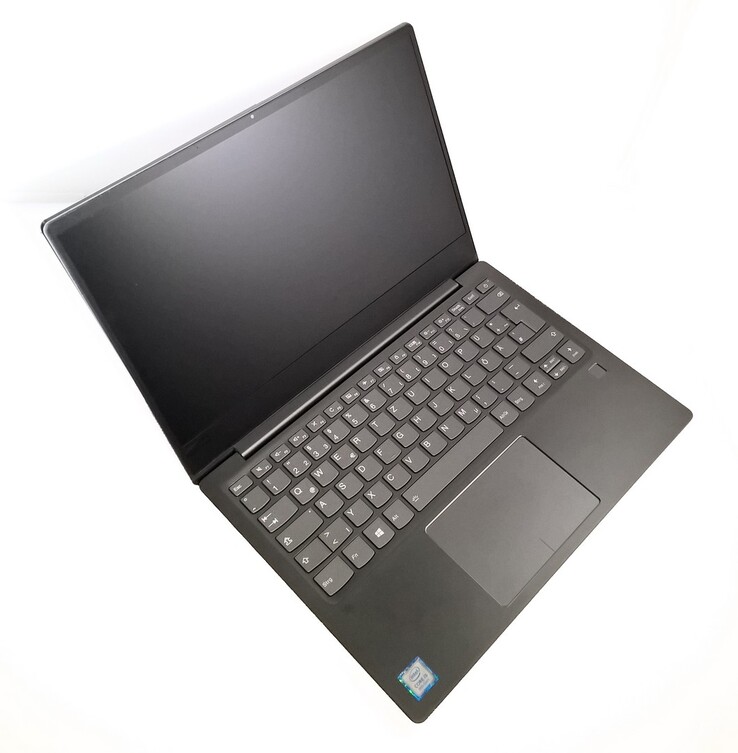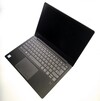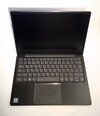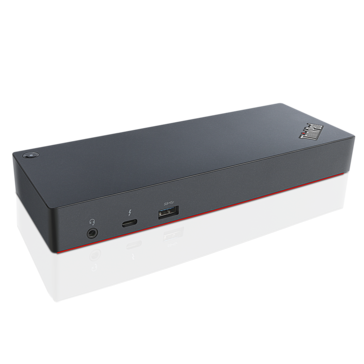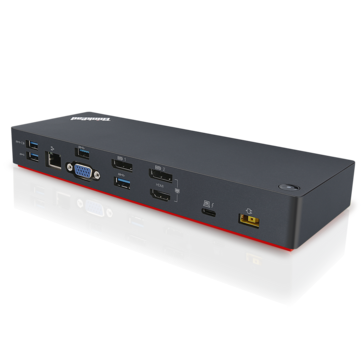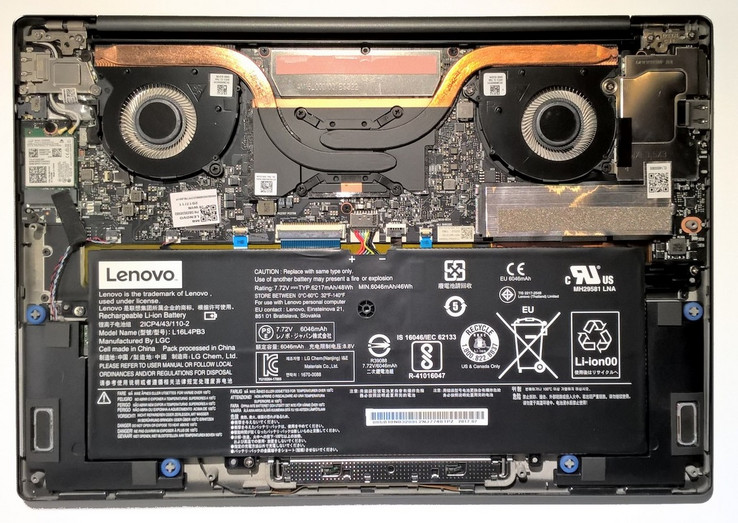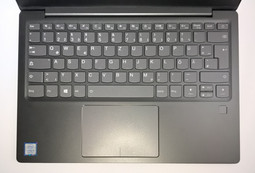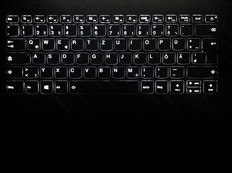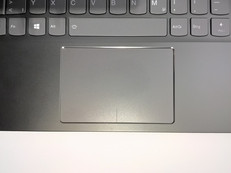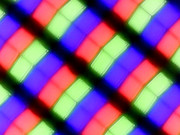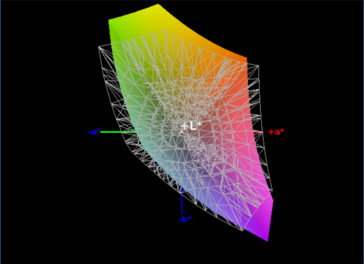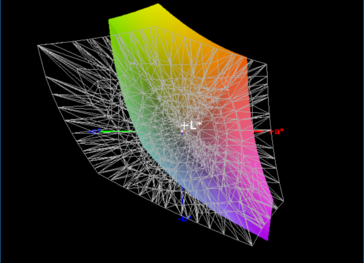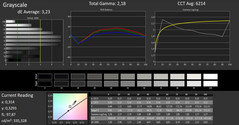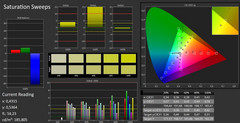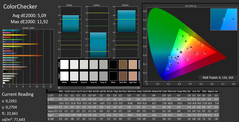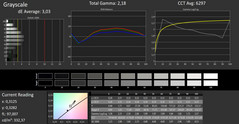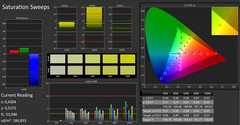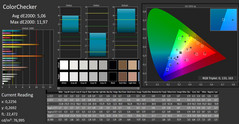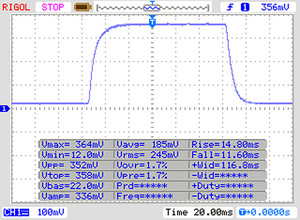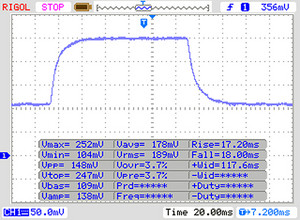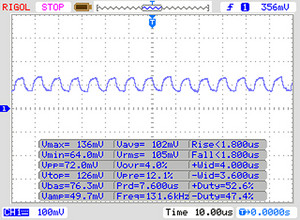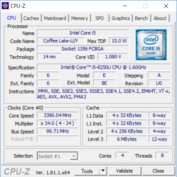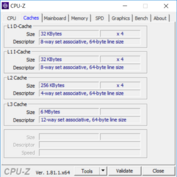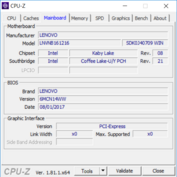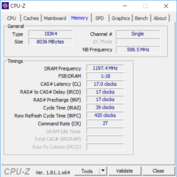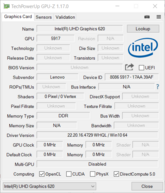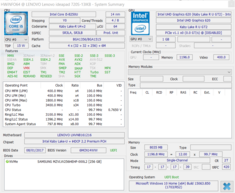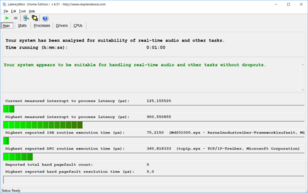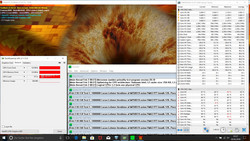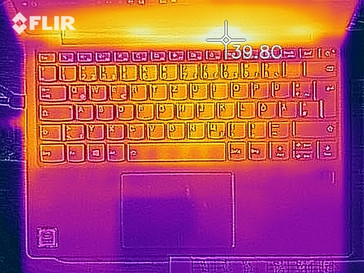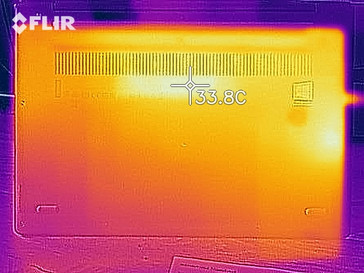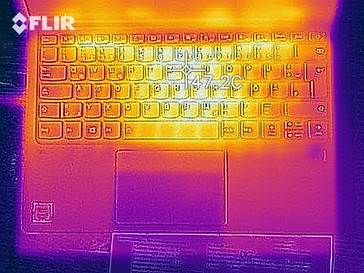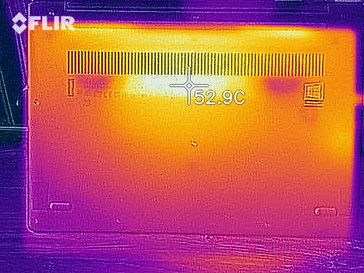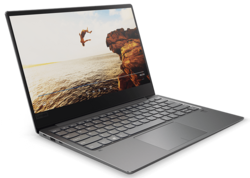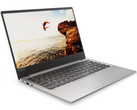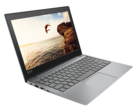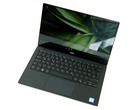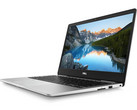Lenovo Ideapad 720S-13IKB (i5-8250U, UHD 620) Laptop Review

Previously the IdeaPad 710S-13ISK left a good impression in our test two years ago; we are now testing a new generation of the ultra-light and slim notebook. Our test unit is equipped with Intel's Core i5-8250U CPU, a 256 GB SSD, and 8 GB of working memory, and an Intel UHD Graphics 620 graphics card is responsible for the display contents.
On the Lenovo website, the IdeaPad 720S is also offered with an Intel Core i7-7500U. In addition, various vendors are listing the device also with an Intel Core i7-8550U or a Core i5-7200U, and the IdeaPad 720s is also available in an AMD version with a Ryzen 5-2500U CPU. During our testing, we will evaluate the possible advantages and disadvantages of the various CPU configurations.
However, we will only use notebooks that are similarly equipped as our test unit for our comparison with other devices, in order to better evaluate the performance of the hardware in our test unit. For this, the IdeaPad 720s is compared with the Acer Spin 5, the two Dell Inspiron 13 7370 and XPS 13 9370 notebooks, and the Schenker Slim 14 (Clevo). All the comparison devices possess the same combination of CPU and GPU as our test unit.
Case
The case of the IdeaPad 720s is made from aluminum and magnesium, which gives it a very sturdy appearance. Our test unit cannot be bent even with the use of significant force. Lenovo uses the same material for the back of the display, and only the display bezel is made of plastic. All the workmanship appears very high quality. While the hinges succeed in keeping the display in its adjusted position, a slight wobbling is still unavoidable during jerky movements. In terms of colors, the buyers of the IdeaPad 720s can choose among "Platinum silver," "Champagne gold," and "Iron gray," with the last being the color of our test unit.
At only 1.1 kg (~2.4 lb), the IdeaPad 720s is the lightest device in our comparison. In terms of the size, only Dell's XPS 13 9370 is smaller. The ultra-mobile concept is definitely working. For buyers who are looking a notebook that needs to be carried around a lot, our test unit is very well suited.
Features
You cannot have everything in a device that is as thin and light as possible. Therefore, Lenovo has shaved off everything that is not absolutely necessary. However, you can restore most connections via an adapter for the Thunderbolt or USB Type-C connection. The buyers should also definitely keep in mind, that there is no SD card reader in the device. Any peripherals can only be connected to the IdeaPad 720s via the USB or the Thunderbolt connections.
The webcam of the IdeaPad 720s produces recordings in the 16:9 format with a maximum resolution of 1280x720 pixels, which should be sufficient for simple video chats.
Communication
The IdeaPad 720s only offers a mediocre WLAN connectivity to the users. Even though the built-in Intel Wireless AC-3165 WLAN adapter supports the fast ac standard in the 5-GHz band, we only achieve transfer rates of 350 MBit/s with the 1x1 Mimo antenna in our measurements. While this is of course still fast, the competitors can clearly surpass our test unit in this regard.
In addition, Bluetooth 4.1 is available for communication with other devices.
Security
The security options of the IdeaPad 720s are straightforward. A fingerprint reader and a TPM-2.0 module are supposed to provide sufficient security for the device. You can easily set up a fingerprint via Windows 10. During the log in, the scanner recognizes the fingerprint after about a second and then logs in the user automatically. Even though the process ran smoothly, the scanner still gave us a sluggish impression.
Accessories
The delivery of the IdeaPad 720s only includes the notebook and a USB Type-C charger. There are no particular connections for a docking station or something similar. Instead, the full range of Thunderbolt devices are available to the user. In its own shop, Lenovo offers a Thunderbolt docking station, which can expand the available connections by VGA, HDMI, LAN, and more.
Maintenance
The bottom plate of the IdeaPad 720s can easily be removed by loosening 10 Torx screws. This gives access to all the internal components of the notebook. However, the maintenance options are limited to cleaning the fans. We imagine that the SSD is beneath the silver strip on the right, above the battery. It might be possible to replace it. However, we have the impression that it is not possible to expand the working memory.
Warranty
Lenovo offers a 2-year warranty with carry-in service to the buyers of the IdeaPad 720s, which means that the device has to be sent to the manufacturer and will be repaired there. Upon request, Lenovo can also expand the warranty by various service levels. You can for example order a pick-up-and-deliver service or an on-site service, or get an international manufacturer's warranty. You can also extend the warranty in this way.
Please see our Guarantees, Return Policies and Warranties FAQ for country-specific information.
Input Devices
Keyboard
Despite the limited availability of space, Lenovo was able to make the spaces between the keys sufficiently large. This prevents wrong input from the keys being too close together. The short stroke needs some getting used to and even after a long typing session, one may not get used to it.. In combination with the crisp pressure point, this results in a noticeable constant strain on the fingertips, which can become strenuous in the long run.
For working in badly lit surroundings, you can turn on the two-step keyboard illumination. Both of the steps illuminate the keys with white light. Even at the higher level, the illumination is not too bright and never blinding the user.
Touchpad
Lenovo uses a ClickPad as a replacement for the mouse in the IdeaPad 720s. The pad surface offers a slight resistance when the fingers slide across. However, precise input and fast mouse movements are still possible without any difficulties. The input is recognized in all the corners, and the mouse keys react to input with comfortable feedback and a slight clicking noise.
Display
The display of the IdeaPad 720s is an IPS panel with almost no bezel, which displays the screen contents at a resolution of 1920x1080 pixels. Lenovo does not offer an alternative with a touchscreen or 4K panel (such as in the Dell XPS 13 9370).
While the brightness distribution in the display of our test is slightly uneven, this does not affect daily operation. The average brightness is in the middle of the range of our comparison group. Screen bleeding is negligible and only becomes noticeable when taking pictures with a long exposure.
Compared to the competing devices, Lenovo's IPS panel offers the fastest reaction times. Even though PWM is used for brightness control, the frequency is so high, that it should not become a problem, even for sensitive eyes.
| |||||||||||||||||||||||||
Brightness Distribution: 85 %
Center on Battery: 290 cd/m²
Contrast: 728:1 (Black: 0.46 cd/m²)
ΔE ColorChecker Calman: 5.09 | ∀{0.5-29.43 Ø4.78}
ΔE Greyscale Calman: 3.23 | ∀{0.09-98 Ø5}
82% sRGB (Argyll 1.6.3 3D)
54% AdobeRGB 1998 (Argyll 1.6.3 3D)
60.2% AdobeRGB 1998 (Argyll 3D)
82.3% sRGB (Argyll 3D)
64.3% Display P3 (Argyll 3D)
Gamma: 2.18
CCT: 6214 K
| Lenovo Ideapad 720S-13IKB LG Philips LGD04EF, , 1920x1080, 13.3" | Dell XPS 13 9370 i5 UHD ID: Sharp SHP148B, Name: LQ133D1, Dell P/N: 8XDHY, , 3840x2160, 13.3" | Acer Spin 5 SP513-52N-54SF LC133LF102, , 1920x1080, 13.3" | Dell Inspiron 13 7370 BOE071A / NV13FHM / Dell G64PY, , 1920x1080, 13.3" | Schenker Slim 14 L17 LG Philips LGD046D, , 1920x1080, 14" | |
|---|---|---|---|---|---|
| Display | 14% | 13% | 5% | 3% | |
| Display P3 Coverage (%) | 64.3 | 68.9 7% | 69.8 9% | 66.7 4% | 66.1 3% |
| sRGB Coverage (%) | 82.3 | 98.4 20% | 94.6 15% | 86.2 5% | 85.2 4% |
| AdobeRGB 1998 Coverage (%) | 60.2 | 69.5 15% | 69.3 15% | 63 5% | 62.3 3% |
| Response Times | -79% | -24% | -32% | -10% | |
| Response Time Grey 50% / Grey 80% * (ms) | 35 ? | 67.2 ? -92% | 49 ? -40% | 46 ? -31% | 37.6 ? -7% |
| Response Time Black / White * (ms) | 25 ? | 41.6 ? -66% | 27 ? -8% | 33 ? -32% | 28 ? -12% |
| PWM Frequency (Hz) | 131000 ? | 2500 ? | 1000 ? | 201 ? | 20490 ? |
| Screen | 25% | 20% | -1% | 7% | |
| Brightness middle (cd/m²) | 335 | 496.4 48% | 295 -12% | 301 -10% | 326 -3% |
| Brightness (cd/m²) | 303 | 469 55% | 276 -9% | 291 -4% | 320 6% |
| Brightness Distribution (%) | 85 | 84 -1% | 88 4% | 87 2% | 81 -5% |
| Black Level * (cd/m²) | 0.46 | 0.5 -9% | 0.27 41% | 0.33 28% | 0.31 33% |
| Contrast (:1) | 728 | 993 36% | 1093 50% | 912 25% | 1052 45% |
| Colorchecker dE 2000 * | 5.09 | 2.9 43% | 2.97 42% | 5.39 -6% | 4.6 10% |
| Colorchecker dE 2000 max. * | 11.92 | 5.26 56% | 5.67 52% | 8.56 28% | 10.3 14% |
| Greyscale dE 2000 * | 3.23 | 3.9 -21% | 3.12 3% | 5.93 -84% | 4.4 -36% |
| Gamma | 2.18 101% | 2.066 106% | 2.45 90% | 2.6 85% | 2.24 98% |
| CCT | 6214 105% | 7169 91% | 6676 97% | 6358 102% | 5978 109% |
| Color Space (Percent of AdobeRGB 1998) (%) | 54 | 63.9 18% | 62 15% | 56 4% | 55.8 3% |
| Color Space (Percent of sRGB) (%) | 82 | 98.2 20% | 94 15% | 86 5% | 85.1 4% |
| Total Average (Program / Settings) | -13% /
9% | 3% /
13% | -9% /
-4% | 0% /
4% |
* ... smaller is better
Even though the measured black value is slightly elevated, black tones appear very dark and saturated on the display. This results in colors having a slight gray veil. The contrast and color space coverage are below the average of the competing devices. Yet subjectively, the colors still appear saturated and clearly separated from each other. While the measured values of the IdeaPad 720s are not bad at all, there are devices with better displays in the comparison within the same price range.
In order to implement the ultra-mobile concept, the IdeaPad 720s also has to be usable outdoors. The offered brightness is indeed sufficient to work in shaded areas. However, in direct sunlight it can quickly become difficult to read the screen contents. At least, the matte display ensures that viewing it is not made even harder by additional reflections.
Display Response Times
| ↔ Response Time Black to White | ||
|---|---|---|
| 25 ms ... rise ↗ and fall ↘ combined | ↗ 14 ms rise | |
| ↘ 11 ms fall | ||
| The screen shows relatively slow response rates in our tests and may be too slow for gamers. In comparison, all tested devices range from 0.1 (minimum) to 240 (maximum) ms. » 58 % of all devices are better. This means that the measured response time is worse than the average of all tested devices (20.2 ms). | ||
| ↔ Response Time 50% Grey to 80% Grey | ||
| 35 ms ... rise ↗ and fall ↘ combined | ↗ 17 ms rise | |
| ↘ 18 ms fall | ||
| The screen shows slow response rates in our tests and will be unsatisfactory for gamers. In comparison, all tested devices range from 0.165 (minimum) to 636 (maximum) ms. » 47 % of all devices are better. This means that the measured response time is worse than the average of all tested devices (31.6 ms). | ||
Screen Flickering / PWM (Pulse-Width Modulation)
| Screen flickering / PWM detected | 131000 Hz | ≤ 90 % brightness setting | |
The display backlight flickers at 131000 Hz (worst case, e.g., utilizing PWM) Flickering detected at a brightness setting of 90 % and below. There should be no flickering or PWM above this brightness setting. The frequency of 131000 Hz is quite high, so most users sensitive to PWM should not notice any flickering. In comparison: 53 % of all tested devices do not use PWM to dim the display. If PWM was detected, an average of 8111 (minimum: 5 - maximum: 343500) Hz was measured. | |||
A great advantage of the IPS panel is the viewing angle stability. From any angle that still allows you see the display, the colors are not distorted, nor the screen contents faded out. In this regard, the displays of some of the competitors are clearly worse than the display of the IdeaPad 720s.
Performance
Our test unit is equipped with Intel's Core i5-8250U and its integrated UHD Graphics 620 graphics solution. With 8 GB of working memory and a 256 GB SSD, it is particularly suited for office work and can also take on slightly more demanding tasks. We would draw the limits at more demanding 3D applications, while it should still be possible to display older games smoothly.
The alternative models of the IdeaPad 720s also cannot offer more than the built-in 8 GB of RAM. Instead, there are various CPU and SSD configurations, and the storage can be preconfigured up to 1 TB. The available processors are the Intel Core i5-7200U, Intel Core i7-7500U, AMD Ryzen 5 2500U, Intel Core i5-8250U, and Intel Core i7-8550U.
This listing sequence also reflects their average performance. While the i5-7200U and i7-7500U processors each have two cores and are able to work on four threads simultaneously, the Ryzen 5-2500U, i5-8250U, and i7-8550U CPUs are quad-core processors, which can each operate on eight threads simultaneously. With all the processors, the typical power consumption is specified at 15 watts (nominally with the Ryzen 5-2500U).
If we look at the pure computing power, AMD's Ryzen 5 2500U can leave Intel's i5-8250U behind and score evenly with Intel's i7-8550U. The two older Core i5-7200U and Core i7-7500U remain far behind, while their performance is still more than sufficient for an office device, and simpler 3D applications are also possible.
However, for everyday life with a notebook, not only the computing power, but also the system performance plays a role. Even though we only have a few Ryzen 5-2500U results, the offered performance did not correspond to our expectations. If in doubt, we would prefer the i5-8250U or the i7-8550U.
Processor
Intel's Core i5-8250U is a quad-core processor that can operate on eight threads simultaneously thanks to Hyperthreading. As the direct successor of Intel's Core i5-7200U, it offers significantly higher clock speeds at similar energy efficiency. How long it can maintain the maximum clock speed of 3.5 GHz in Turbo mode, depends decisively on the cooling of the notebook.
You can compare the performance of Intel's Core i5-8250U with that of other processors in our CPU benchmark page.
The cooling system of the IdeaPad 720s appears to do a good job. The processor was able to maintain its performance during the whole period of our Cinebench-R15 benchmark loop. Even though most of the competitors started off with higher results, they quickly dropped to similar or lower values than our test unit in the constant performance test. An exception was the Dell XPS 13 9370, whose points also initially dropped quickly, but then leveled out at a significantly higher value.
The performance could also be maintained during battery operation.
System Performance
In daily operation, the performance of the IdeaPad 720s is impressive. Subjectively, the small and slim device runs very smoothly and offers astonishing performance. The benchmark results confirm this impression, and of the 13-inch comparison devices, only the Dell Inspiron 13 7370 is able to achieve better results.
| PCMark 8 | |
| Home Score Accelerated v2 | |
| Schenker Slim 14 L17 | |
| Dell Inspiron 13 7370 | |
| Lenovo Ideapad 720S-13IKB | |
| Dell XPS 13 9370 i5 UHD | |
| Acer Spin 5 SP513-52N-54SF | |
| Work Score Accelerated v2 | |
| Dell Inspiron 13 7370 | |
| Lenovo Ideapad 720S-13IKB | |
| Acer Spin 5 SP513-52N-54SF | |
| Dell XPS 13 9370 i5 UHD | |
| PCMark 8 Home Score Accelerated v2 | 3544 points | |
| PCMark 8 Work Score Accelerated v2 | 4777 points | |
Help | ||
Storage Solution
The IdeaPad 720s also owes its good impression in the system performance to its good Samsung SSD. In the comparison, it is only surpassed by the 960Pro of the Schenker Slim 14, which is also manufactured by Samsung. The remaining competitors are left far behind by the storage solution of our test unit.
You can see in our HDD/SSD benchmark page how the built-in storage compares to other SSDs.
| Lenovo Ideapad 720S-13IKB Samsung PM961 MZVLW256HEHP | Acer Spin 5 SP513-52N-54SF Micron 1100 MTFDDAV256TBN | Dell Inspiron 13 7370 Micron 1100 MTFDDAV256TBN | Schenker Slim 14 L17 Samsung SSD 960 Pro 512 GB m.2 | |
|---|---|---|---|---|
| CrystalDiskMark 3.0 | -44% | -57% | 53% | |
| Read Seq (MB/s) | 1674 | 462.7 -72% | 476.8 -72% | 2860 71% |
| Write Seq (MB/s) | 1191 | 439.9 -63% | 458.3 -62% | 1995 68% |
| Read 512 (MB/s) | 658 | 325.2 -51% | 351 -47% | 815 24% |
| Write 512 (MB/s) | 852 | 361.9 -58% | 298.2 -65% | 1480 74% |
| Read 4k (MB/s) | 51.8 | 27.52 -47% | 20.79 -60% | 57.7 11% |
| Write 4k (MB/s) | 114.9 | 91.6 -20% | 65.8 -43% | 196.7 71% |
| Read 4k QD32 (MB/s) | 349.2 | 247.3 -29% | 172.8 -51% | 565 62% |
| Write 4k QD32 (MB/s) | 332.2 | 292 -12% | 160.3 -52% | 475.1 43% |
Graphics Card
In the IdeaPad 720s, Intel's UHD Graphics 620 integrated into the processor is responsible for displaying the screen contents. The graphics card has a clock speed of up to 1150 MHz. System RAM is shared with the UHD Graphics 620 and so the integrated GPU benefits from fast dual-channel bandwidth.
In the 3DMark benchmarks, our test unit only achieves last place among the competitors. While all the other notebooks profit from their dual-channel RAM, the IdeaPad 720s only has single-channel RAM. However, the results are still decent and almost reach the values of the Acer Spin 5 with dual-channel RAM.
You can see in our GPU benchmark page what graphics performance Intel's UHD Graphics 620 can achieve in other systems.
| 3DMark 11 - 1280x720 Performance GPU | |
| Dell XPS 13 9370 i5 UHD | |
| Dell Inspiron 13 7370 | |
| Schenker Slim 14 L17 | |
| Acer Spin 5 SP513-52N-54SF | |
| Lenovo Ideapad 720S-13IKB | |
| 3DMark | |
| 1280x720 Cloud Gate Standard Graphics | |
| Dell Inspiron 13 7370 | |
| Dell XPS 13 9370 i5 UHD | |
| Acer Spin 5 SP513-52N-54SF | |
| Lenovo Ideapad 720S-13IKB | |
| 1920x1080 Fire Strike Graphics | |
| Dell XPS 13 9370 i5 UHD | |
| Dell Inspiron 13 7370 | |
| Acer Spin 5 SP513-52N-54SF | |
| Lenovo Ideapad 720S-13IKB | |
| 3DMark 11 Performance | 1683 points | |
| 3DMark Cloud Gate Standard Score | 7319 points | |
| 3DMark Fire Strike Score | 893 points | |
Help | ||
Gaming Performance
As expected, the IdeaPad 720s is not a gaming notebook. However, the integrated graphics card by Intel still offers sufficient performance for casual and older games. For example, you can play the five-year-old "BioShock Infinite" smoothly in medium settings.
The difference between devices with dual-channel RAM and single-channel RAM also shows in the results of the gaming benchmarks. Even though both of the notebook variants are not designed for gaming applications, you can still get quite a few more FPS from dual-channel RAM.
| Rise of the Tomb Raider | |
| 1366x768 Medium Preset AF:2x | |
| Dell XPS 13 9370 i5 UHD | |
| Lenovo Ideapad 720S-13IKB | |
| 1024x768 Lowest Preset | |
| Dell XPS 13 9370 i5 UHD | |
| Dell Inspiron 13 7370 | |
| Lenovo Ideapad 720S-13IKB | |
| BioShock Infinite | |
| 1920x1080 Ultra Preset, DX11 (DDOF) | |
| Schenker Slim 14 L17 | |
| Dell XPS 13 9370 i5 UHD | |
| Acer Spin 5 SP513-52N-54SF | |
| Lenovo Ideapad 720S-13IKB | |
| 1366x768 High Preset | |
| Dell XPS 13 9370 i5 UHD | |
| Schenker Slim 14 L17 | |
| Acer Spin 5 SP513-52N-54SF | |
| Lenovo Ideapad 720S-13IKB | |
| 1366x768 Medium Preset | |
| Dell XPS 13 9370 i5 UHD | |
| Schenker Slim 14 L17 | |
| Acer Spin 5 SP513-52N-54SF | |
| Lenovo Ideapad 720S-13IKB | |
| 1280x720 Very Low Preset | |
| Dell XPS 13 9370 i5 UHD | |
| Schenker Slim 14 L17 | |
| Acer Spin 5 SP513-52N-54SF | |
| Lenovo Ideapad 720S-13IKB | |
| Thief | |
| 1366x768 Normal Preset AA:FX | |
| Lenovo Ideapad 720S-13IKB | |
| 1024x768 Very Low Preset | |
| Lenovo Ideapad 720S-13IKB | |
| low | med. | high | ultra | |
|---|---|---|---|---|
| BioShock Infinite (2013) | 49.6 | 27.6 | 22.6 | 7.6 |
| Thief (2014) | 16.3 | 11.3 | ||
| Rise of the Tomb Raider (2016) | 19.5 | 11.1 |
Emissions
Noise Emissions
During normal load, you rarely hear the fans of the IdeaPad 720s. During idle operation, our measuring devices were only able to detect the surrounding noises. While our test unit is also quiet under load, you can then hear the fan noise. However, the fan runs evenly and only turns off if a stable lower temperature of the processor has been reached.
Noise level
| Idle |
| 30.13 / 30.13 / 30.9 dB(A) |
| Load |
| 34.7 / 33.3 dB(A) |
 | ||
30 dB silent 40 dB(A) audible 50 dB(A) loud |
||
min: | ||
Temperature
If the IdeaPad 720s has not run for a while, the palm rests feel uncomfortably cold. While perhaps, this problem will not occur often in summer, during the colder seasons it takes some time for the case surface to reach a comfortable temperature. Our temperature measurements show that the notebook only reaches 28 °C (82 °F) at the surface during idle. Even though the temperatures rise above 40 °C (104 °F) under load, the palm rests still remain below the 30-degree mark (86 °F).
During our stress test scenario, we utilized the full capacity of the IdeaPad 720s. During the one-hour test, the core temperatures rose considerably, and the processor speed dropped far below the base clock speed. However, the cooling of the notebook managed to stabilize the temperature inside to between 60 and 70 °C (140 - 158 °F). So our test unit ran the last half hour of the hour-long test at the Core i5-8250U's base clock speed of 1.6 GHz. While this scenario is extremely unlikely in everyday life, if it should occur, the cooling is powerful enough to ensure a minimum of performance even over long periods.
(±) The maximum temperature on the upper side is 43.6 °C / 110 F, compared to the average of 34.3 °C / 94 F, ranging from 21.2 to 62.5 °C for the class Office.
(±) The bottom heats up to a maximum of 42 °C / 108 F, compared to the average of 36.8 °C / 98 F
(+) In idle usage, the average temperature for the upper side is 27.3 °C / 81 F, compared to the device average of 29.5 °C / 85 F.
(+) The palmrests and touchpad are cooler than skin temperature with a maximum of 29.6 °C / 85.3 F and are therefore cool to the touch.
(±) The average temperature of the palmrest area of similar devices was 27.6 °C / 81.7 F (-2 °C / -3.6 F).
Speakers
Lenovo labels the IdeaPad 720s with the stamp of the US speaker manufacturer JBL. However, this does not ensure a great sound at all. Our measurements show a strong emphasis of the mid-range with the high notes flat and the bass notes dropping steeply. Subjectively, we perceive the sound as strongly reverberating, which could be the result of the simulated Dolby-Surround sound. Instead of bringing across a spacious sound, it sounds like it is coming out of a metal box. While the speakers might be sufficient for short audio listening, we recommend using external speakers or headphones.
Lenovo Ideapad 720S-13IKB audio analysis
(-) | not very loud speakers (66 dB)
Bass 100 - 315 Hz
(±) | reduced bass - on average 6.2% lower than median
(±) | linearity of bass is average (10.4% delta to prev. frequency)
Mids 400 - 2000 Hz
(±) | higher mids - on average 8.6% higher than median
(±) | linearity of mids is average (8.6% delta to prev. frequency)
Highs 2 - 16 kHz
(+) | balanced highs - only 2.2% away from median
(+) | highs are linear (5.4% delta to prev. frequency)
Overall 100 - 16.000 Hz
(±) | linearity of overall sound is average (20.8% difference to median)
Compared to same class
» 47% of all tested devices in this class were better, 10% similar, 44% worse
» The best had a delta of 7%, average was 21%, worst was 53%
Compared to all devices tested
» 55% of all tested devices were better, 8% similar, 37% worse
» The best had a delta of 4%, average was 24%, worst was 134%
Apple MacBook 12 (Early 2016) 1.1 GHz audio analysis
(+) | speakers can play relatively loud (83.6 dB)
Bass 100 - 315 Hz
(±) | reduced bass - on average 11.3% lower than median
(±) | linearity of bass is average (14.2% delta to prev. frequency)
Mids 400 - 2000 Hz
(+) | balanced mids - only 2.4% away from median
(+) | mids are linear (5.5% delta to prev. frequency)
Highs 2 - 16 kHz
(+) | balanced highs - only 2% away from median
(+) | highs are linear (4.5% delta to prev. frequency)
Overall 100 - 16.000 Hz
(+) | overall sound is linear (10.2% difference to median)
Compared to same class
» 7% of all tested devices in this class were better, 2% similar, 91% worse
» The best had a delta of 5%, average was 18%, worst was 53%
Compared to all devices tested
» 4% of all tested devices were better, 1% similar, 94% worse
» The best had a delta of 4%, average was 24%, worst was 134%
Frequency comparison (checkboxes selectable!)
Power Management
Power Consumption
Lenovo is using a USB 3.0 Type-C connection for the power connection of the IdeaPad 720s. The power consumption is in the upper middle of the field of the competitors. At 3.9 watts during idle and 34 watts under load, the notebook is very efficient. However, some of the competing devices use even less power. The included power supply offers a maximum of 45 watts and therefore should be sized sufficiently for any situation.
| Off / Standby | |
| Idle | |
| Load |
|
Key:
min: | |
| Lenovo Ideapad 720S-13IKB i5-8250U, UHD Graphics 620, Samsung PM961 MZVLW256HEHP, IPS, 1920x1080, 13.3" | Dell XPS 13 9370 i5 UHD i5-8250U, UHD Graphics 620, Toshiba XG5 KXG50ZNV256G, IPS, 3840x2160, 13.3" | Acer Spin 5 SP513-52N-54SF i5-8250U, UHD Graphics 620, Micron 1100 MTFDDAV256TBN, IPS, 1920x1080, 13.3" | Dell Inspiron 13 7370 i5-8250U, UHD Graphics 620, Micron 1100 MTFDDAV256TBN, IPS, 1920x1080, 13.3" | Schenker Slim 14 L17 i5-8250U, UHD Graphics 620, Samsung SSD 960 Pro 512 GB m.2, IPS, 1920x1080, 14" | |
|---|---|---|---|---|---|
| Power Consumption | -16% | 7% | 4% | -18% | |
| Idle Minimum * (Watt) | 3.9 | 4.3 -10% | 3.9 -0% | 3.6 8% | 6 -54% |
| Idle Average * (Watt) | 7.7 | 8 -4% | 8.2 -6% | 6.8 12% | 8.46 -10% |
| Idle Maximum * (Watt) | 10.4 | 8.1 22% | 8.8 15% | 8.9 14% | 9.48 9% |
| Load Average * (Watt) | 33.3 | 46.6 -40% | 28.5 14% | 36 -8% | 37.4 -12% |
| Load Maximum * (Watt) | 34 | 49.8 -46% | 30.7 10% | 36.5 -7% | 41.1 -21% |
* ... smaller is better
Battery Life
The battery life of the IdeaPad 720s is without peer. At more than 10 hours in our WLAN test, the device outlasts the competitors by almost two hours. However, the battery discharges significantly faster under load. The screen turns dark after an hour and a half. While Lenovo does not envision replacing the battery, you can reach it below the bottom of the case of the IdeaPad 720s.
| Lenovo Ideapad 720S-13IKB i5-8250U, UHD Graphics 620, 46 Wh | Dell XPS 13 9370 i5 UHD i5-8250U, UHD Graphics 620, 52 Wh | Acer Spin 5 SP513-52N-54SF i5-8250U, UHD Graphics 620, 53.9 Wh | Dell Inspiron 13 7370 i5-8250U, UHD Graphics 620, 38 Wh | Schenker Slim 14 L17 i5-8250U, UHD Graphics 620, 44 Wh | |
|---|---|---|---|---|---|
| Battery runtime | -10% | -18% | -27% | -50% | |
| Reader / Idle (h) | 17.3 | 14.5 -16% | 12.9 -25% | ||
| WiFi v1.3 (h) | 10.1 | 6.8 -33% | 8.3 -18% | 5.8 -43% | 5.1 -50% |
| Load (h) | 1.5 | 1.8 20% | 1.3 -13% |
Verdict
Pros
Cons
The IdeaPad 720s by Lenovo is a very light and ultra-slim notebook for everyday office work. As one of the few devices in our test, the IdeaPad 720s is able to maintain its performance consistently and without drops. Even under extreme conditions, the good cooling ensures that the system can continue to be used. However, the maintenance options are limited, and Lenovo concentrated only on the most essential connections. But thanks to the Thunderbolt connections, all the necessary ports can be provided by the corresponding peripheral.
With the Lenovo IdeaPad 720s, the buyers receive a very thin and light notebook, which will always be there, but never in the way during everyday life.
In the current offerings, the IdeaPad 720s can be purchased with a Kaby Lake CPU of the 8th generation without hesitation. However, the buyers have to follow their own preferences in deciding whether the models with AMD's Ryzen 5 2500U or the Kaby Lake processors of the 7th generation are worthwhile in terms of their price.
Lenovo Ideapad 720S-13IKB
- 02/06/2018 v6 (old)
Mike Wobker




